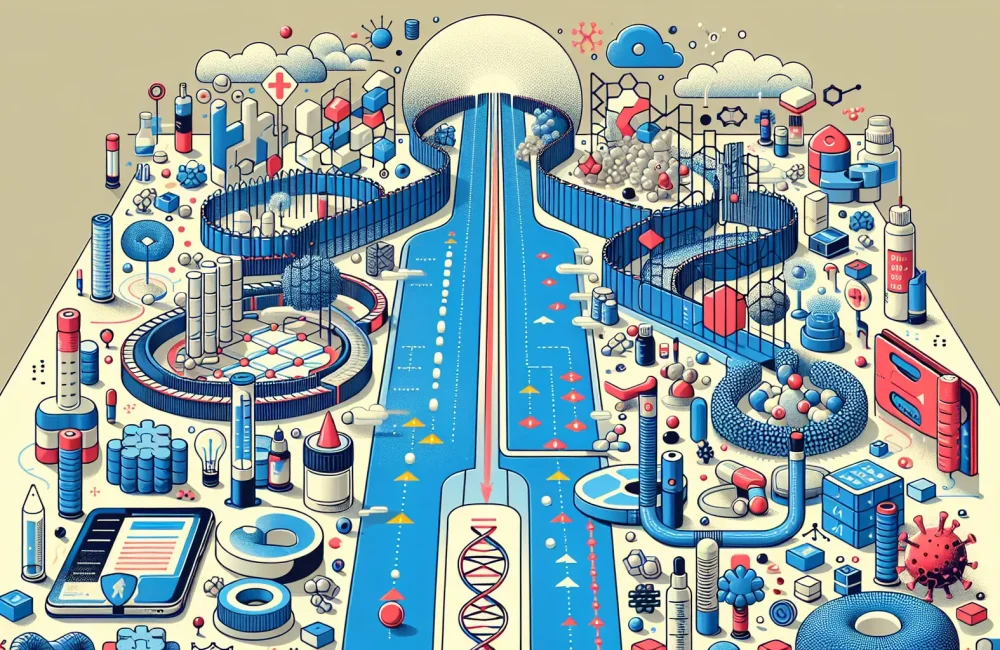By CAFMI AI From JAMA
Persistent Asthma Exacerbations Despite Biologic Advances
Asthma exacerbations continue to pose significant challenges among patients even with the advent of advanced biologic therapies specifically targeting the type 2 inflammation pathway. These biologics, which focus on suppressing eosinophilic and type 2 immune responses, have markedly improved control for many patients. However, a subset of individuals still experiences frequent asthma flare-ups, highlighting that type 2 inflammation does not encompass all the disease mechanisms active in asthma. The persistence of exacerbations despite these targeted treatments points to other underlying pathways that are not adequately addressed by current biologics. For clinicians, recognizing that non-type 2 driven inflammation plays a role is critical in managing patients who seem refractory to these therapies. This gap emphasizes the need for broadened diagnostic evaluations encompassing additional inflammatory markers and cellular profiles to better tailor therapy.
Novel Inflammatory Pathways Driving Exacerbations
Recent research sheds light on distinct residual inflammatory processes responsible for continued asthma exacerbations in patients on biologics. Among these, neutrophilic inflammation emerges as a prominent mechanism. Unlike the typical eosinophilic inflammation targeted by available biologics, neutrophils contribute to airway hyperreactivity and remodeling through release of proteases and reactive oxygen species. Additionally, innate lymphoid cells (ILCs), particularly group 3 ILCs, have been implicated in perpetuating airway inflammation through cytokines outside the traditional type 2 axis. These cells can produce IL-17 and other pro-inflammatory cytokines that exacerbate symptoms independently of eosinophils. Airway remodeling—characterized by structural changes including fibrosis, smooth muscle hypertrophy, and mucus gland hyperplasia—also sustains bronchial hyperresponsiveness and limits reversibility with treatment. Environmental exposures such as pollutants, allergens, and respiratory infections further complicate this landscape by triggering innate immune responses and inflammatory cascades that contribute to exacerbations. Understanding these multifaceted mechanisms underlines that asthma is a heterogeneous disease with overlapping pathways requiring comprehensive diagnostic and therapeutic strategies.
Implications for Clinical Practice and Future Directions
Clinicians should be aware that persistent asthma exacerbations during biologic therapy represent a complex interplay of diverse inflammatory and environmental factors. Current treatment paradigms focusing on type 2 inflammation are insufficient for all patients, and a personalized approach is essential. This includes expanded diagnostic evaluation such as sputum cytology to detect neutrophilic inflammation and biomarker panels assessing multiple cytokine signatures beyond type 2 markers. Emerging therapeutic targets include cytokines like IL-17 and other mediators implicated in non-type 2 pathways, as well as drugs aiming to modulate innate lymphoid cells and airway remodeling processes. Patient counseling should emphasize trigger avoidance including pollution and infections, alongside standard asthma action plans. Ongoing research into these residual pathways promises to refine treatment algorithms and contribute to more effective, individualized care. Follow-up strategies should incorporate regular monitoring of exacerbation frequency, lung function, and inflammatory profiles to optimize therapy adjustments. Ultimately, integrating knowledge of these uncovered mechanisms into primary care workflows will improve asthma control and patient quality of life in the era of biologic therapy.
Read The Original Publication Here






